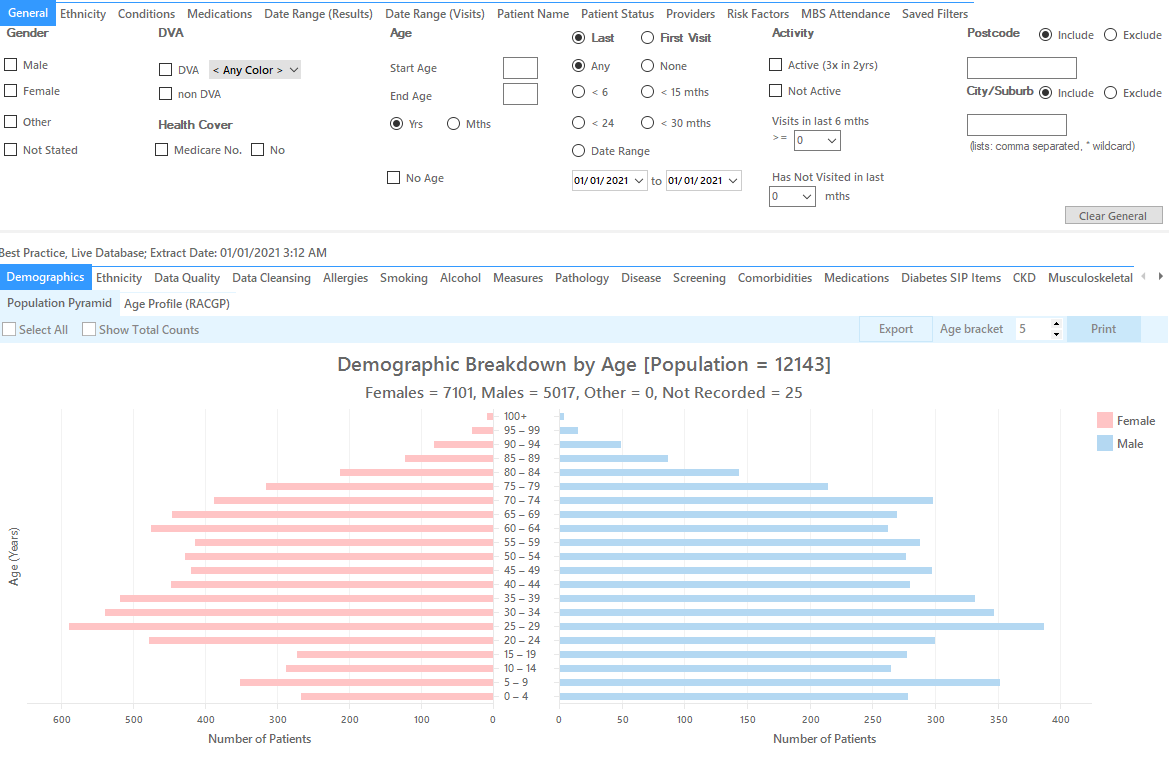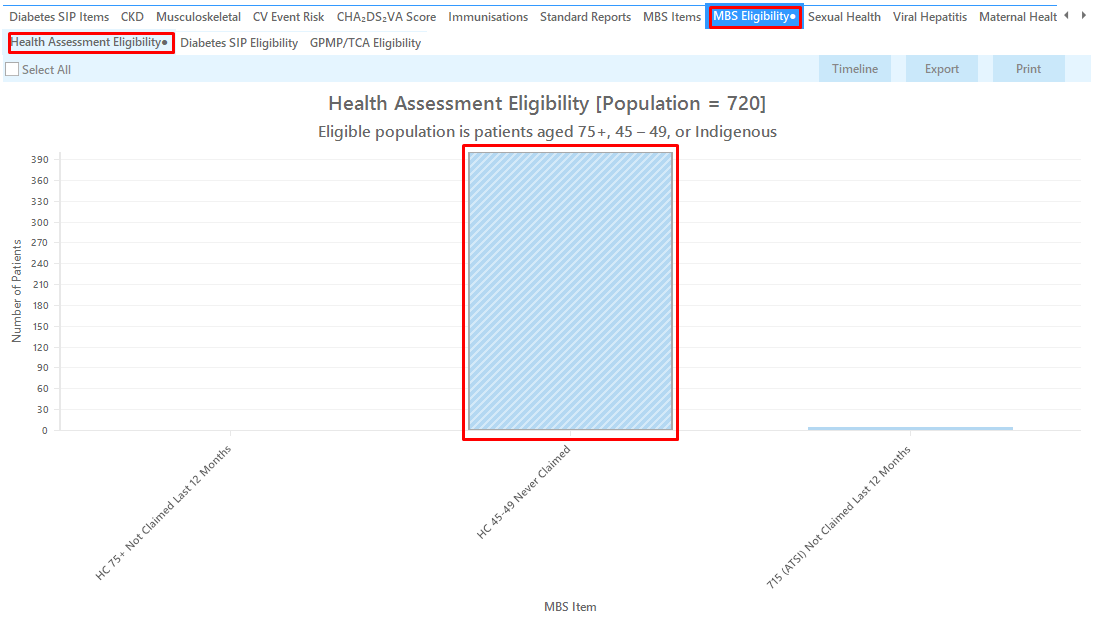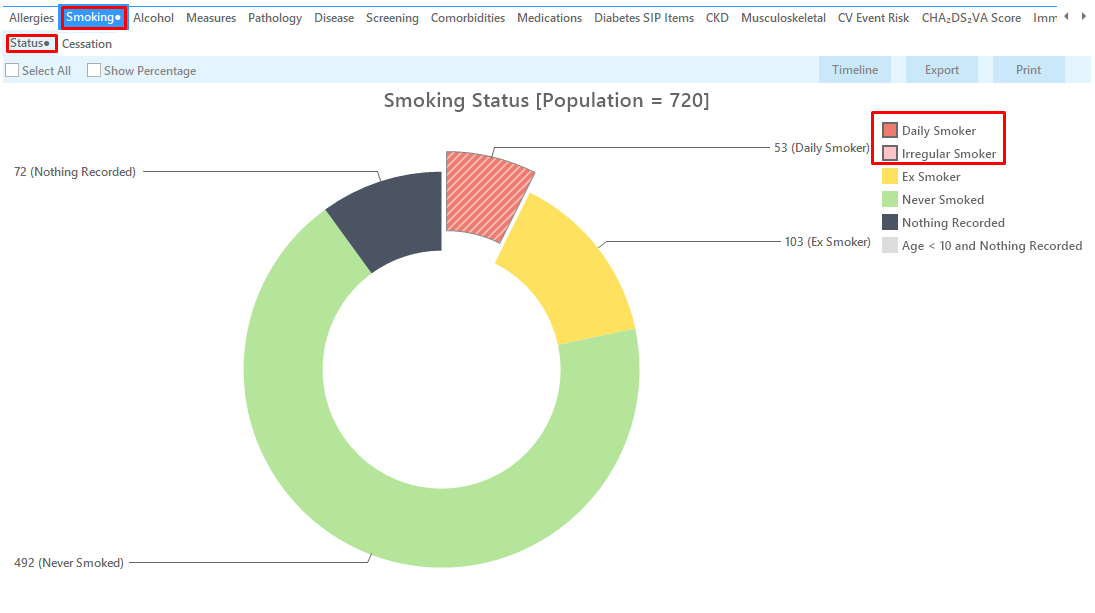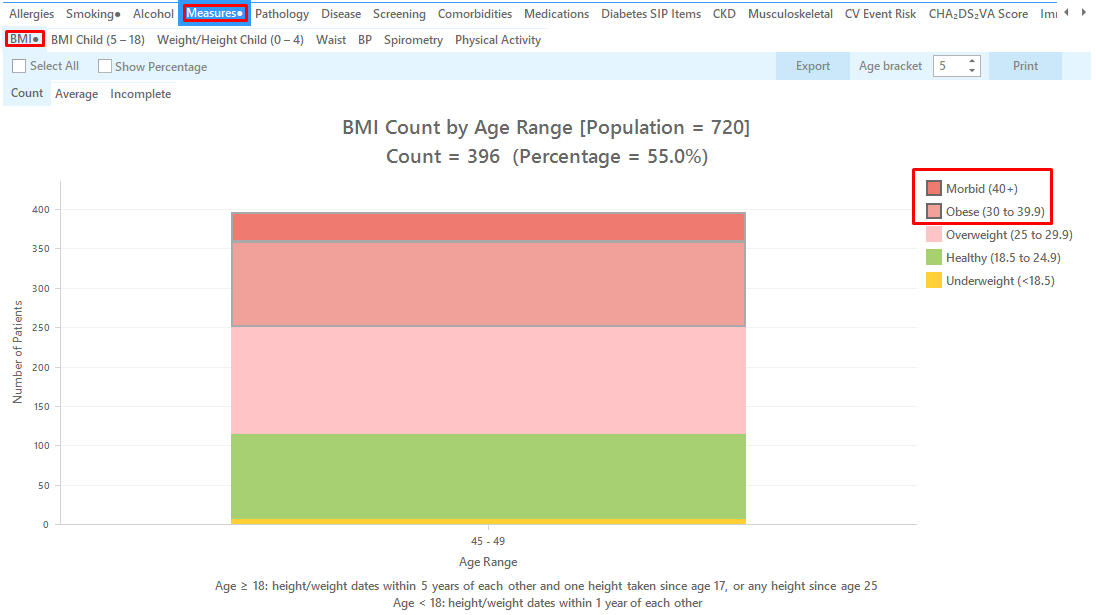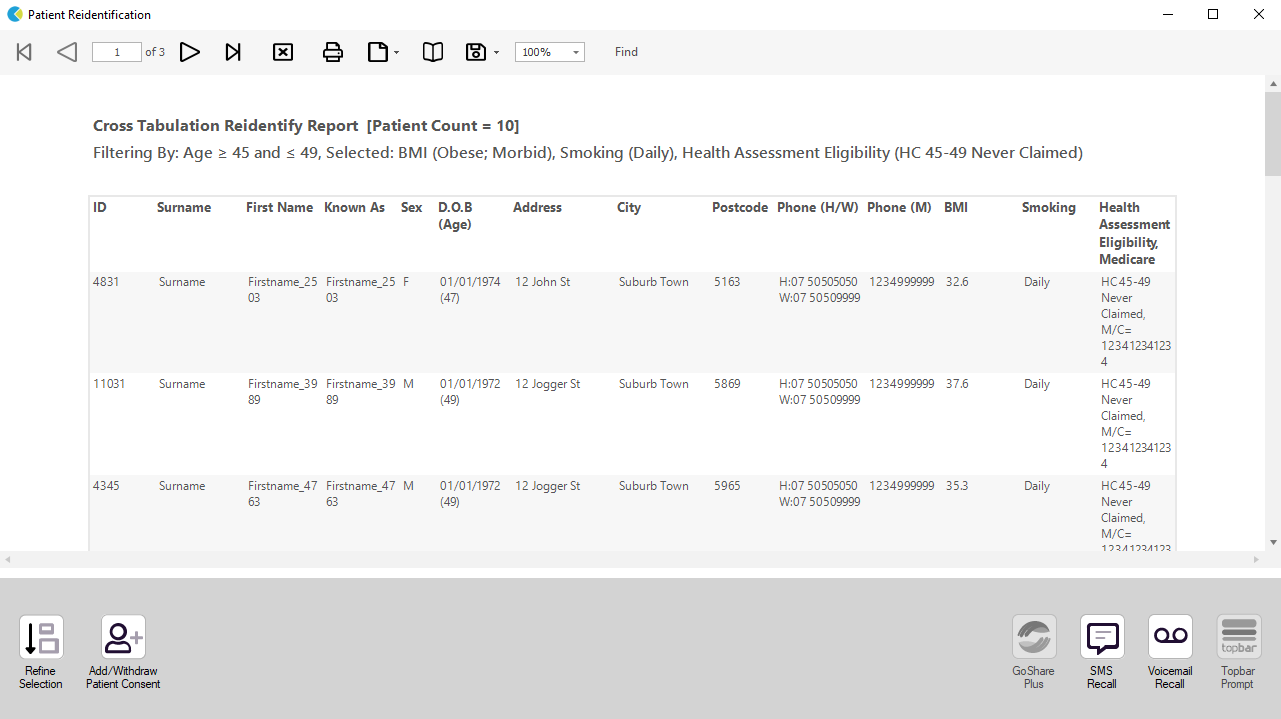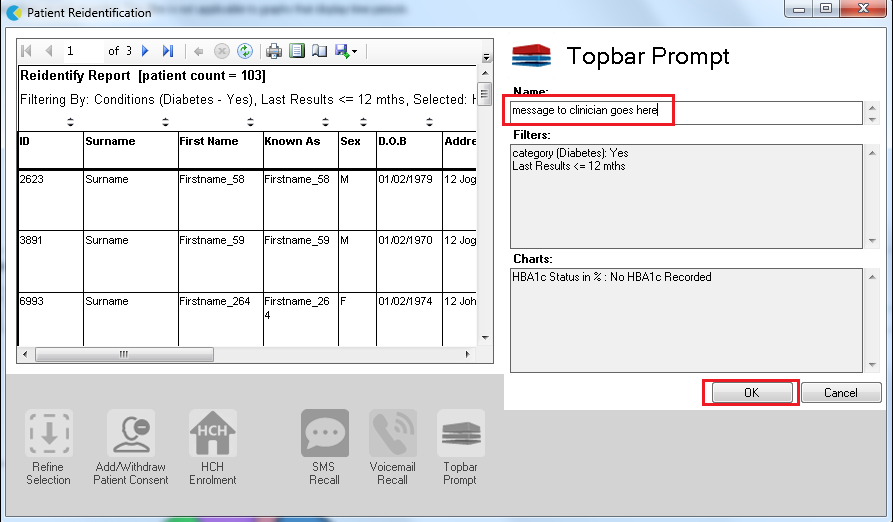Recipe Name: | Identify all patients eligible for a 45 - 49 Health Assessment |
Rationale: | The health assessment is for a patient who, in the clinical judgement of the medical practitioner and based on the identification of a specific risk factor, is at risk of developing a chronic disease. |
Target: | All patients aged between 45 and 49 years who have lifestyle or biomedical risk factors |
CAT Starting Point: |
|
Filter Steps
- In the 'General' tab, under Age, type 45 in the Start Age field and 49 in the End Age field
- Click the Recalculate button
Recipe Steps Reports
- Hide Filters
- Select the "MBS Items" tab
- Select the "Not Recorded" tab
- Select the column titled "HC 45 - 49"
- Select the "Smoking" tab. Choose the Daily Smoker and Irregular Smoker segments of the graph
- Select the "Measures" tab
- Select the "BMI" tab
- Select the Morbid and Obese sections of the graph
- Click the Report button at the top of the screen
This report will show all patients aged between 45 and 49 years who smoke and are obese or morbidly obese and haven't had a 45 - 49 Health Assessment billed.
The decision that a patient is at risk of developing a chronic disease is a clinical judgement made by the GP. However, at least one risk factor must be identified. Factors that the GP may consider include, but are not limited to:
- Lifestyle risk factors such as smoking, physical inactivity, poor nutrition or alcohol misuse
- Biomedical risk factors such as high cholesterol, high blood pressure, impaired glucose metabolism or excess weight
- Family history of a chronic disease
The above example looks at lifestyle risk factors. The recipe may be modified to look at other lifestyle or biomedical risk factors described above. Selecting different reports, such as blood pressure, cholesterol or fasting blood glucose, will provide a different list of patients who may be targeted for a 45 - 49 Health Assessment.
Create a prompt to display in Topbar Remember you need to be in the CAT4 Daily View to be able to create prompts. Other pre-requisites are: To start click on the 'Daily View' icon on the top of your CAT4 screen: Once you have applied the filter(s) and displayed the patients of interest as described above, you can create a prompt that will be shown to all clinicians using Topbar if a patient meeting the prompt criteria is opened in their clinical system. The full guide is available at CAT PLUS PROMPTS and a short guide on how to create prompts in CAT4 can be found at Creating a Prompt in CAT4 To start you have to use the drop-down menu at the bottom of the patient details report and select "Prompt at Consult - Topbar" then click on "Go" to give the new prompt a name. The name you enter is the prompt text displayed in Topbar, so choose a simple but clear name that tells the clinician seeing the prompt what should be done.
To Export Patient List to Microsoft Excel:
1. Click on the “Export Icon” at the top of the Patient Reidentification window.
2. Click on “Excel”
3. Choose a file name and a location to save to (eg. Create a folder C:/ClinicalAudit/CAT Patient FollowUp)
4. Click “Save”
The steps above will produce a list of patients with contact details in MS Excel which can then be used to:
1. Go back through the individual patient records in the GP Clinical Desktop System (CDS) and update known records
2. Phone patients to update their record
3. Produce a mail merge to recall patients for follow up
